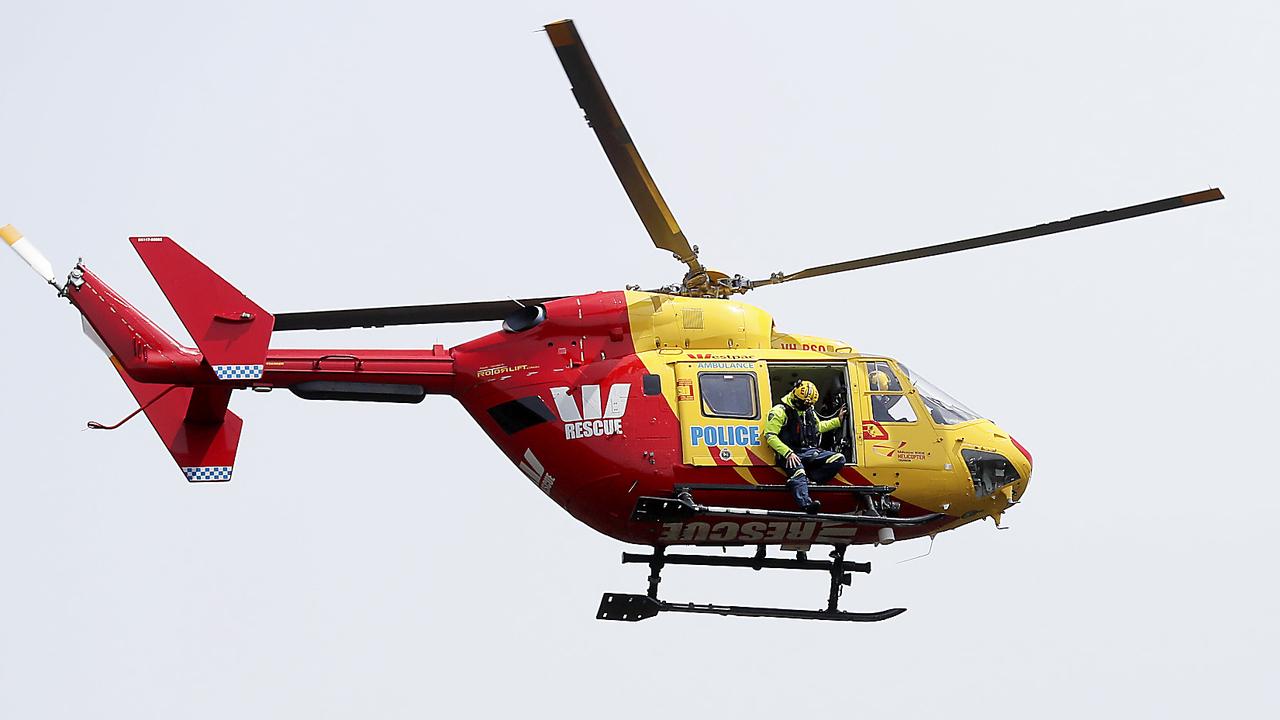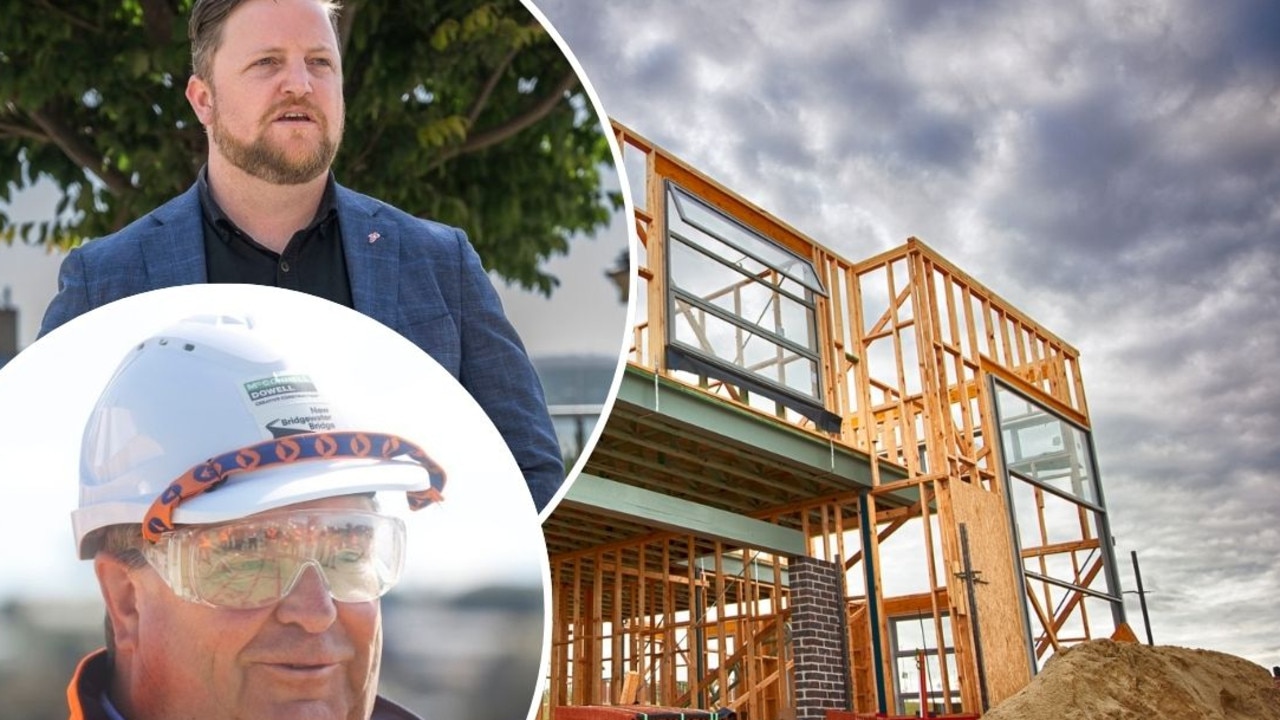Panel report finds Mac Point stadium could trigger credit downgrade
The state government says they’ll plough on with the “game-changing” new footy stadium without further delay after a new report labelled it an ‘alien’ on Hobart’s historic skyline.
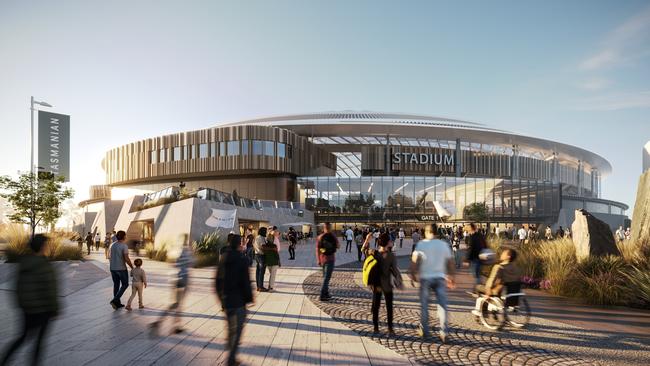
Tasmania
Don't miss out on the headlines from Tasmania. Followed categories will be added to My News.
The proposed Macquarie Point Stadium would add $1.86 billion to the state’s debt over a decade and could trigger a credit rating downgrade for the government, an independent assessment panel has found in a scathing report.
The Tasmanian Planning Commission’s panel released its Draft Integrated Assessment Report on the stadium project Monday afternoon.
The report — which is intended to identify “key challenges, concerns and potential problems relating to the project” — challenges many of the key arguments made in its favour.
It notes that the stadium would likely not inspire many more Tasmanians to take up sport and would have an adverse effect on the historic waterfront precinct and on the Cenotaph.
The panel found that the total cost of building and operating the stadium and related infrastructure would amount to $1.4bln between 2024 and 2058.
It would deliver benefits to the state of around $744m over that time and create up to 238 full time equivalent jobs.
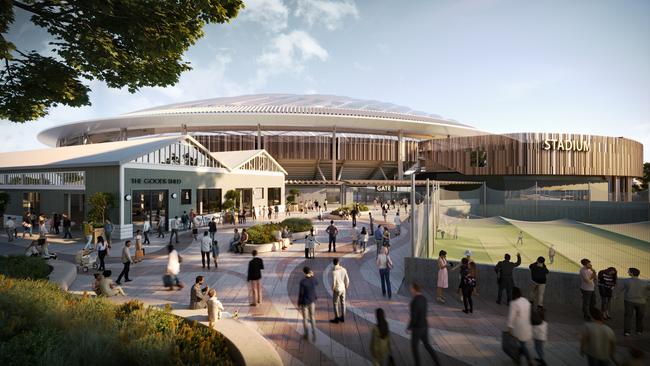
The project would return 53c for ever dollar invested meaning “there would, by implication, be a reduction in Tasmania’s economic welfare from implementing the project” — although it noted the result could range between 41c and 68c.
“The Panel finds that the costs of the Project are approximately double its estimated benefits,” the report said.
“The Panel finds that under its central scenario, construction of the Project would require the State to borrow – or otherwise finance at the same or greater cost – approximately $992m.
That figure would compound with $76m a year of debt servicing costs, the report says.
After 10 years of operation, it is estimated the State would have an additional $1.86 billion in debt, compared to the situation if the Project was not built,” the assessment says.
The document reveals that the total capacity for the stadium would be 24,500 for sporting events and up to 39,000 for concerts.
The panel also found that the health benefits of the stadium had been overstated.
“There is very limited evidence of a positive trickle-down or inspiration effect from watching elite sport at a stadium to greater participation in sports,” it said.
“Multiple research articles from 2002-2021 across the globe found that there is no evidence supporting the concept that elite sport increases physical activity or sports participation in the general population.
“Equally, there is little to no research evidence of stadiums and their associated major events increasing grassroots participation or physical activity health outcomes.
And it found that the stadium would be “disproportionate in the context of the small scale of Hobart”.
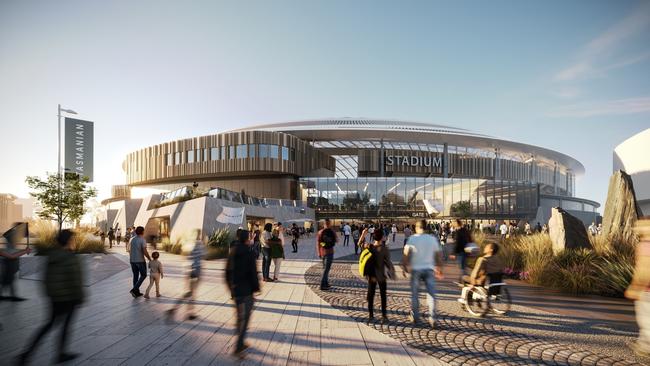
“The Panel finds that the built form of the stadium would present an overbearing appearance in the context of the existing built form of the area, which is heavily informed by its historical development, maritime associations, and surrounding landscape,” it said.
“The Panel acknowledges that a stadium would be a new, ‘alien’, form to some extent if inserted into any existing city context and that this has the potential to add new character and new layers of history and meaning to a city’s life and identity.
“The Panel considers that both the proposed built form and the use of the stadium building would have a significant detrimental effect on the historical cultural heritage and community values of the Cenotaph.”
Macquarie Point Development corporation CEO Anne Beach said the assessment was an important step in the planning process.
“We appreciate the work undertaken by the Tasmanian Planning Commission in preparing this draft assessment report, and are carefully reviewing the issues identified. This is a significant milestone, and we will be working to respond promptly to support the assessment process and timeline,” she said.
As an ‘Issues Report’ for consultation, the document focuses on areas where the Commission is seeking feedback to inform the final report due in September. It does not comment on areas where no further information is sought.
“Our response will include clarifications, further information and set out areas where we have some concerns around the project scope and the application of planning principles.”

Minister for Business, Industry and Resources Eric Abetz said the Macquarie Point Development Corporation would now work through the issues the report raises.
“The report does appear to underplay the immense benefits of the stadium and the precinct it will unlock, including the key outcome of securing our own AFL/AFLW team,” Mr Abetz said.
“The report has also raised broad issues and taken a wide scope of the project, and we are concerned about the potential of any delays to an already tight timeline.
“We have been clear, that if we are to meet the existing time frames set out in the agreement, we cannot afford any delays.”
Greens Treasury spokesman Vica Bayley said the project should be ditched.
“This report completely undermines the government’s pathetic attempts to market the stadium as a good thing for the state,” he said.
“It shows it’s a complete economic loser, costing well over a billion dollars, adding massively to the state’s debt, and putting our credit rating at risk.”
Anti stadium group Our Place called for the project to be abandoned and for the government to come up with a Plan B to get AFL and AFLW team.
“The government must pull this project from the Planning Commission now and save Tasmanian taxpayers the $60m allocated for consultants and put an end to the division the project has generated,” spokesman Roland Browne said.
The Draft Integrated Assessment Report is available for public review and open to submission via the Tasmanian Planning Commission’s website until 8 May.
Originally published as Panel report finds Mac Point stadium could trigger credit downgrade


